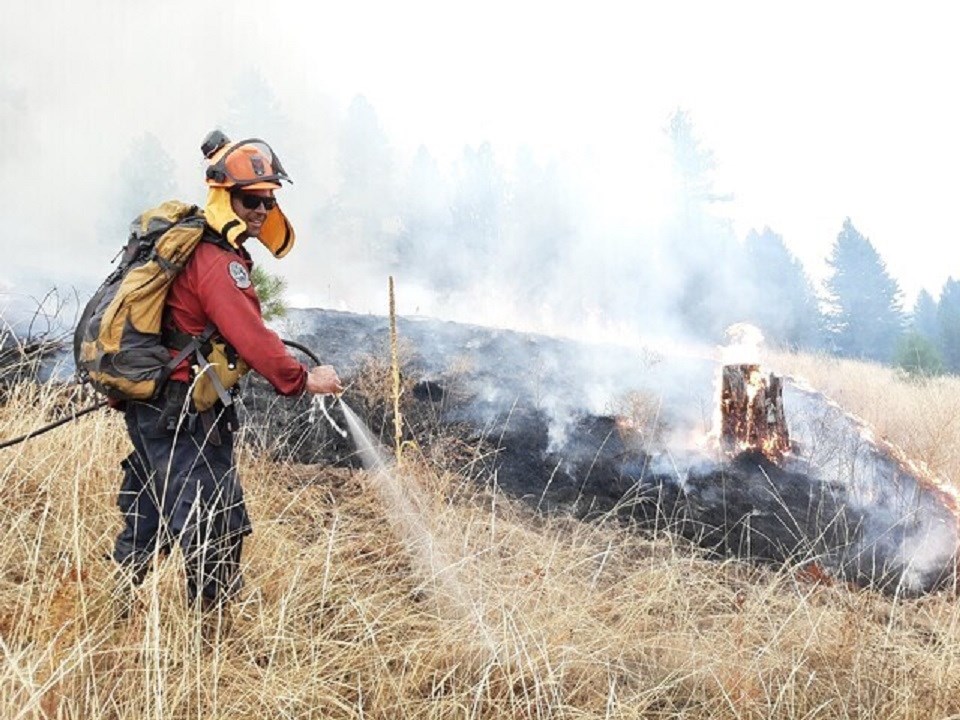The BC Wildfire Service is bolstering its ranks and may call for a campfire ban next week given the impending heat wave forecast to bake the Kamloops area in back-to-back days of 40 C.
A heat wave is forecast to hit the region later this week and remain for several days, according to Environment Canada. Temperatures are expected to reach 40 C on Monday and Tuesday — enough to potentially trigger a heat warning.
Fire information officer Aydan Coray told Castanet BCWS has increased the number of firefighters in most zones across the Kamloops Fire Centre.
She said crews are being encouraged to take frequent rest cycles of about 15 to 30 minutes every hour, monitor themselves and their fellow crew members for signs of fatigue and following the BCWS standard first aid plan put in place for heat exhaustion for all staff working in the field.
“Our personal safety is our number one priority, particularly in like these periods where we have extended heat," she said.
Standby crews are typically increased from one to two crews to three and four during heat waves, depending on the fire danger rating and expected fire activity in a zone, she said, adding a typical crew consists of three to five firefighters.
Crews are currently located in Kamloops, Salmon Arm, Vernon, Penticton, Princeton, Merritt, Lilooet and Lytton, she said.
“If a crew is experiencing heightened [fire] activity and they need support from another region, we do have crews available to transport over to other regions, or we can call on our neighbouring fire centres as well for our available resources as needed,” Coray said.
In the event a crew is tending to a fire in the middle of the heat, Coray said it is still recommended that firefighters take those 15 to 30 minute breaks if possible to avoid heat exhaustion.
“It’s up to the crews,” she said.
Campfire ban could be implemented next week
Coray said category two and three open burning fires are currently prohibited in the Kamloops Fire Centre, but a campfire ban isn't in place, though it’s something she said they continually evaluate.
“We are looking into next week, with the heat, the need for [a] campfire ban,” she said.
She said the buildup of dried-out vegetation has not yet reached the threshold required to implement a campfire ban in the fire centre.
The fire danger rating as of Thursday afternoon is predominately moderate across most of the Kamloops Fire Centre with pockets of low risk around Vernon and high in the Lillooet and Lytton areas.
Coray said heightened temperatures with little to no precipitation are expected in the fire centre over the next week, with a chance of thunderstorms Friday night into Saturday in the Lillooet, Merritt and Kamloops areas.
“Those are not likely to be accompanied by much in the way of precipitation,” Coray said, noting Kamloops is sitting below its 20-year average in precipitation over May and June.
Ken Dosanjh, a meteorologist with Environment Canada, said the heat wave will be the first of the year for the region and is due to a ridge of high pressure expected to build off the B.C. coastline.
Coray said “the public is our eyes and ears on the ground,” and the BCWS appreciates people keeping an eye out for possible wildfires and reporting them to the service at 1-800-663-5555 or by texting *5555 on their cellphones or over the BCWS app.



